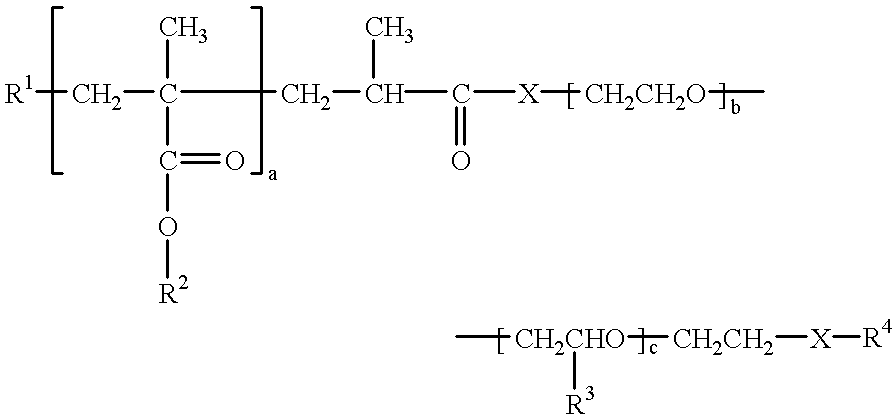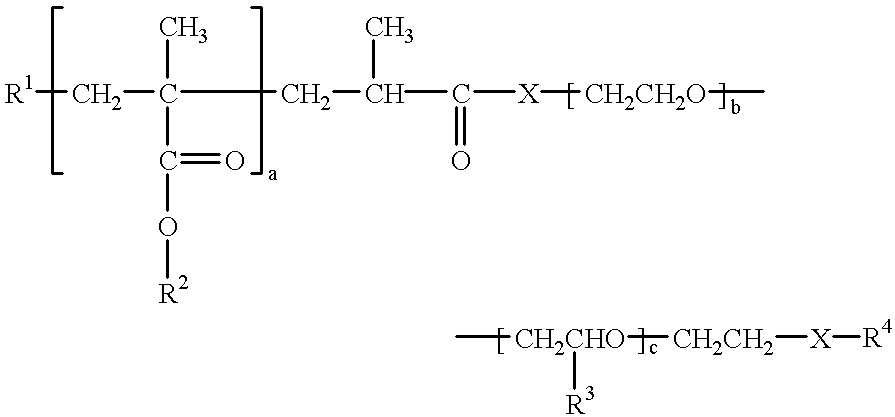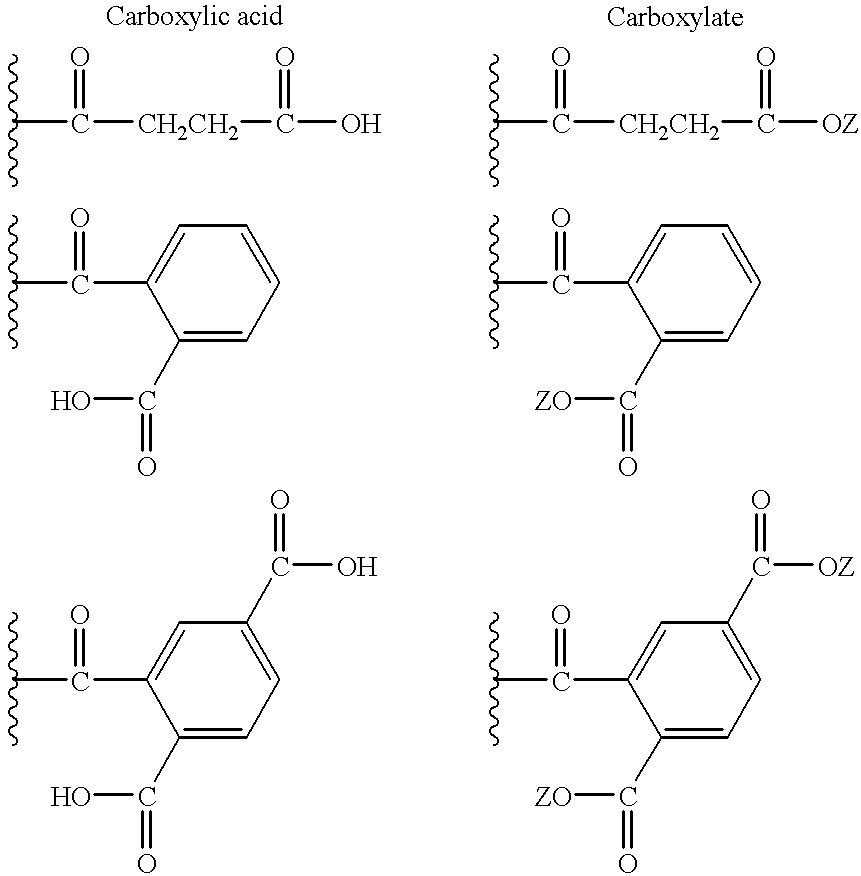Dispersants for preparing aqueous pigment pastes
a technology for dispersants and pigment pastes, applied in the field of dispersants for preparing aqueous pigment pastes, can solve the problems of poor wetting, difficulty in incorporating pigments, and many problems, and achieve the effect of reducing the number of problems
- Summary
- Abstract
- Description
- Claims
- Application Information
AI Technical Summary
Benefits of technology
Problems solved by technology
Method used
Image
Examples
example 1 a
Preparation of Polymethyl Methacrylate by Free-Radical Polymerization (not in accordance with the invention)
180 g of toluene were heated to 100.degree. C. under a nitrogen atmosphere in a reactor. A solution of 4.2 g of azodiisobutyronitrile, 202.4 g of n-dodecyl mercaptan (1 mol) and 1198 g (about 12 mol) of methylmethacrylate in 170 g of toluene was added dropwise at 100.degree. C. at a constant rate over the course of 3 hours. After the end of the reaction, the reaction mixture was reinitiated by adding 2.8 g of azodiisobutyronitrile over the course of 1 hour, after which reaction is allowed to continue for 1 hour more. Residual monomers and solvent were removed at 150.degree. C. under an oil pump vacuum (1 torr) and the clear, viscous product was diluted to a solids content of 70% by adding toluene. The resultant polymer was found by gel chromatography to have an M.sub.n (calibration against PMMA / THF) of 1710 with an M.sub.w / M.sub.n ratio of 1.56. The residual monomer content w...
examples 2 a and 3
A
Preparation of Polymethyl Methacrylates with Different Molecular Weights by Free-Radical Polymerization (not in accordance with the invention)
The procedure was basically the same as in Example 1 A with the difference that the amounts of n-dodecyl mercaptan and of initiator were varied as shown by Table 1.
example 4 a
Preparation of Poly-n-butyl Methacrylate by Free-Radical Polymerization (not in accordance with the invention)
The procedure was basically the same as Example 1 A with the difference being that 10 molar equivalents of n-butyl methacrylate instead of 12 molar equivalents of methyl methacrylate were used per mole of n-dodecyl mercaptan.
The resulting polymer was found by gel chromatography to have an M.sub.n (calibration against PMMA / THF) of 2150 with an M.sub.w / M.sub.n ratio of 1.78. The residual monomer content was <0.1%.
PUM
| Property | Measurement | Unit |
|---|---|---|
| Angle | aaaaa | aaaaa |
| Percent by mass | aaaaa | aaaaa |
| Mass | aaaaa | aaaaa |
Abstract
Description
Claims
Application Information
 Login to View More
Login to View More - R&D
- Intellectual Property
- Life Sciences
- Materials
- Tech Scout
- Unparalleled Data Quality
- Higher Quality Content
- 60% Fewer Hallucinations
Browse by: Latest US Patents, China's latest patents, Technical Efficacy Thesaurus, Application Domain, Technology Topic, Popular Technical Reports.
© 2025 PatSnap. All rights reserved.Legal|Privacy policy|Modern Slavery Act Transparency Statement|Sitemap|About US| Contact US: help@patsnap.com



